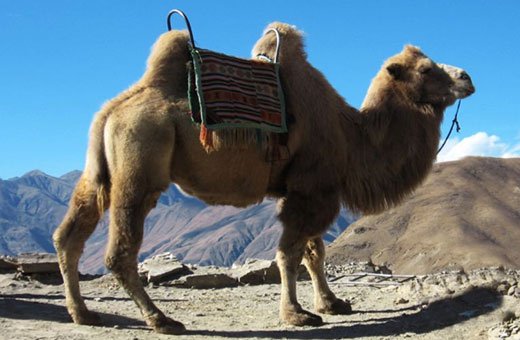
The Bactrian camel is a fascinating creature adapted to some of the harshest environments in the world, primarily the deserts of Mongolia and China. With their ability to withstand extreme temperatures and their efficient water conservation, these camels were once the lifeline of many nomadic tribes. But here’s the thing: their numbers have dwindled significantly due to various factors, putting them on the brink of extinction. In this blog post, we’ll look at why they’re endangered, what conservation efforts are underway, and how we can help preserve these remarkable animals.
Understanding the Bactrian Camel
The Bactrian camel, scientifically known as *Camelus bactrianus*, is distinct from its one-humped relative, the dromedary. Think of the Bactrian camel as a desert survival expert. These camels can thrive in temperatures ranging from -40°F to 120°F, which is impressive! Their two humps store fat, which the camels can metabolize into water and energy when food is scarce. Isn’t nature amazing?
Beyond their physical adaptations, the cultural significance of Bactrian camels is immense. For thousands of years, they’ve been used for transportation, wool, and even milk by nomadic herders. Picture a caravan of camels trekking across the arid landscape—these animals are central to the livelihoods of many communities. Sadly, their existence is threatened, and understanding why requires a closer look.
The Current Status of Bactrian Camels
You might be wondering just how endangered the Bactrian camel is. Currently, the IUCN (International Union for Conservation of Nature) lists the Bactrian camel as critically endangered. This classification means their population has plummeted to fewer than 1,000 wild individuals. In contrast, domesticated Bactrian camels number roughly 2 million, but they often don’t contribute to the genetic diversity needed for the survival of their wild counterparts.
The decline in the wild population results from several factors, including habitat loss due to urbanization, poaching, and climate change. As deserts become more arid, the already sparse resources become even scarcer. This creates a ripple effect that reduces their ability to survive and reproduce. Simply put, if things don’t change quickly, we may lose these extraordinary animals forever.
Threats Facing the Bactrian Camel
Multiple factors contribute to the endangered status of Bactrian camels. Here’s a closer look at some of the main threats:
- Habitat Loss: Urban development and agricultural expansion are encroaching on the Bactrian’s natural habitat, resulting in shrinking living spaces.
- Climate Change: As the climate warms, the desert environments where Bactrian camels thrive face unpredictable weather patterns, further stressing their habitats.
- Poaching: While not as commonly targeted as some other animals, poaching for meat and other resources still poses a risk.
- Genetic Bottleneck: With such a small wild population, inbreeding can lead to health issues and reduced adaptability.
Each of these challenges plays a vital role in the overall decline of the Bactrian camel. Recognizing these threats is the first step toward effective conservation.
Conservation Efforts and Success Stories
Fortunately, there’s hope for the Bactrian camel! Various organizations and governments are working tirelessly to protect this species. One critical initiative is the establishment of protected areas where Bactrian camels can roam free from human interference. These conservation zones help to preserve their habitats and provide a safe space for breeding.
Additionally, some conservationists are focused on educating local communities about the importance of Bactrian camels. By promoting sustainable practices and highlighting the camels’ cultural significance, people can see the value in protecting these animals rather than exploiting them.
You might be surprised to learn that there have been success stories in similar conservation efforts. For example, the recovery of the Przewalski’s horse, once extinct in the wild, serves as a beacon of hope for the Bactrian camel. It shows that with dedicated efforts, a population can rebound.
How You Can Help Bactrian Camels
Feeling inspired to make a difference? Here are some simple steps you can take to help protect the Bactrian camel:
- Spread Awareness: Share information about the Bactrian camel on social media or among friends. The more people know, the better.
- Support Conservation Organizations: Donate or volunteer with groups working to protect Bactrian camels and their habitats.
- Choose Sustainable Products: Opt for products that are environmentally friendly and support sustainable agriculture to reduce habitat loss.
- Advocate for Policy Change: Support policies that protect endangered species and their environments, whether at the local or global level.
Every little bit helps, and your actions can contribute to the broader effort to save these remarkable camels.
The Future of the Bactrian Camel
So, what does the future hold for the Bactrian camel? While the challenges are significant, the potential for recovery is also present. With ongoing conservation efforts, increased awareness, and a global commitment to protecting wildlife, there’s a chance to reverse the trend of decline.
Honestly, it will take a collective effort—governments, organizations, and individuals all playing their part. If we raise our voices and take action now, we can ensure that future generations will know the joy of seeing Bactrian camels roaming their natural habitats.
The Bactrian camel is more than just a fascinating curiosity; they’re a vital part of our world and cultural history. Their plight reminds us of the importance of conservation and our responsibility to protect endangered species. By understanding the challenges they face and participating in ongoing efforts to support them, we can help secure a hopeful future for these remarkable creatures.
Let’s not wait until it’s too late. With knowledge and action, we can make strides toward preserving the incredible legacy of the Bactrian camel. After all, every little effort counts in the big picture of conservation.
